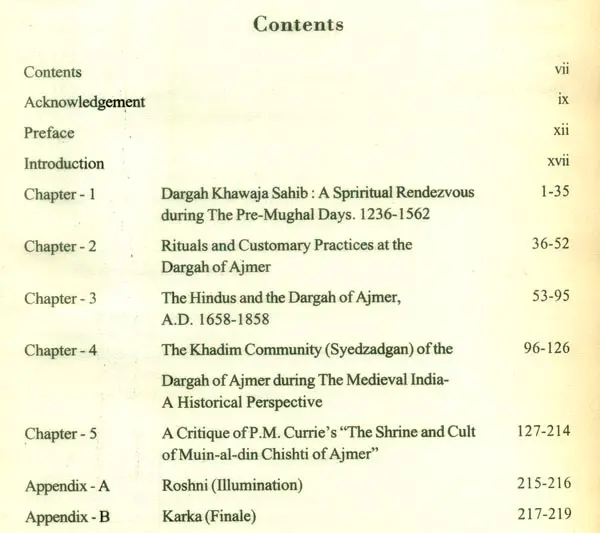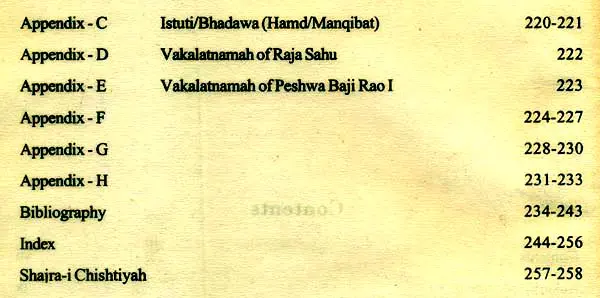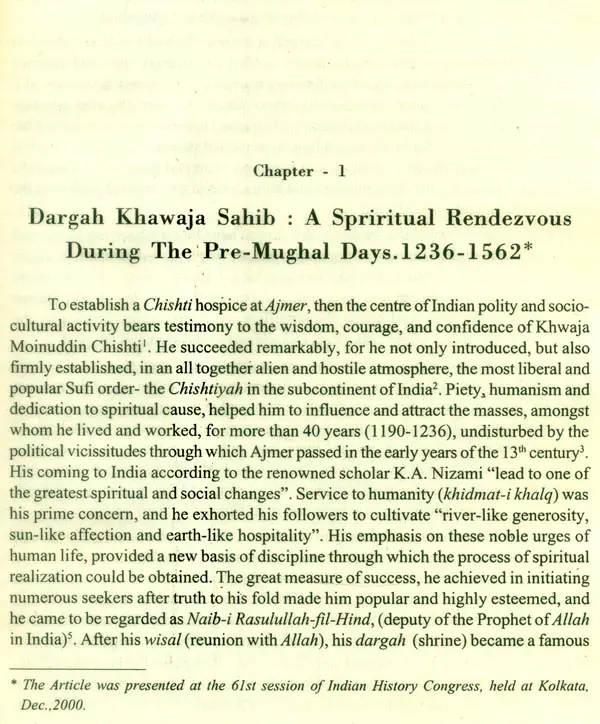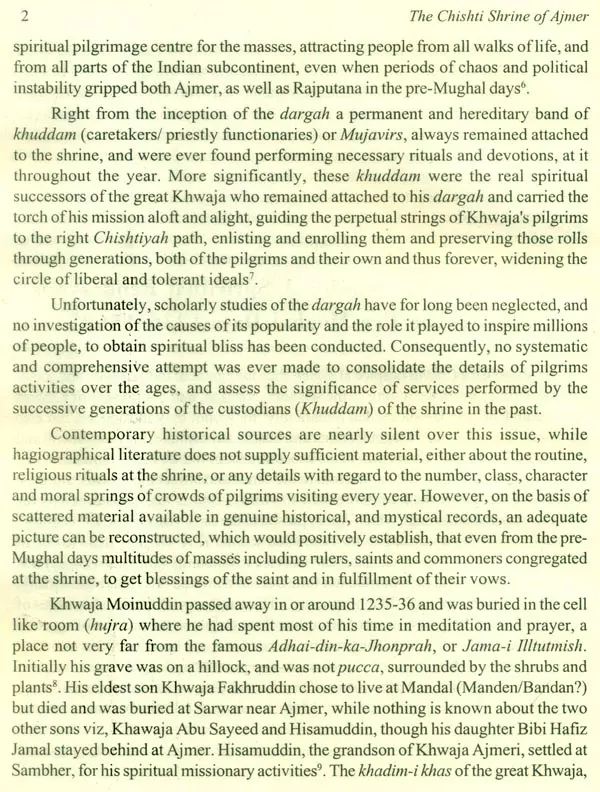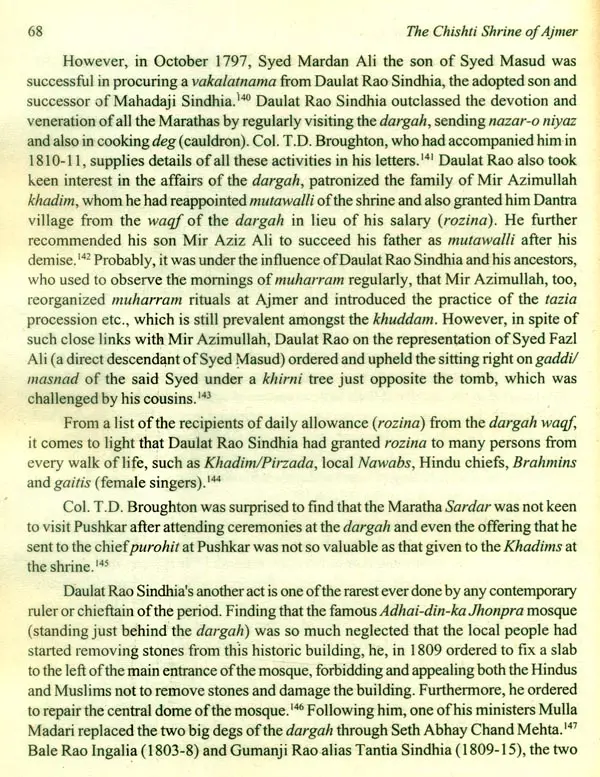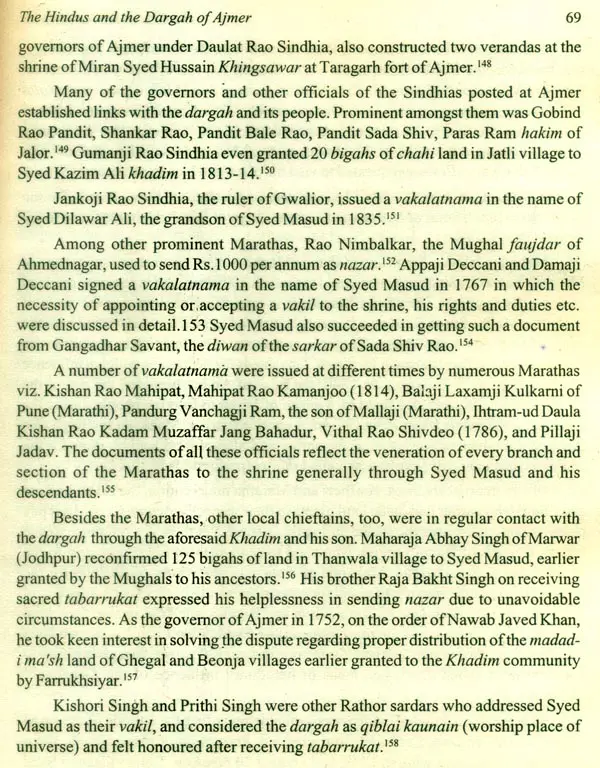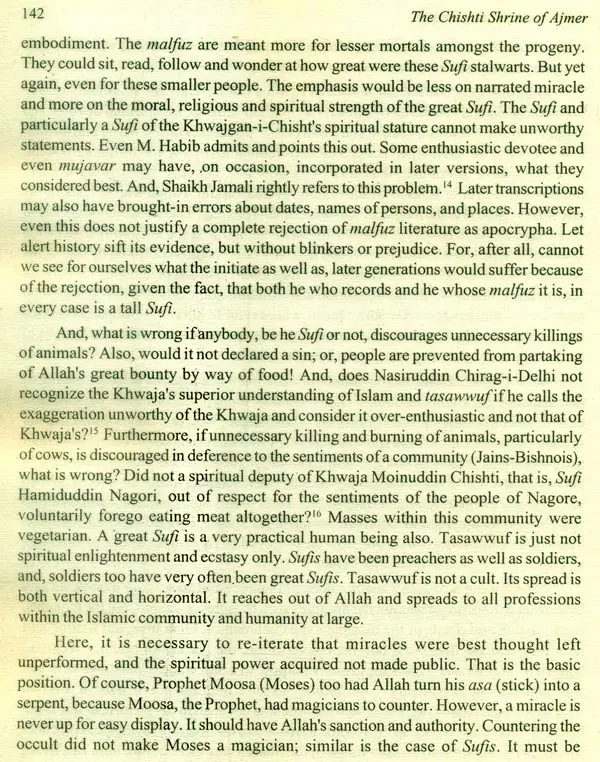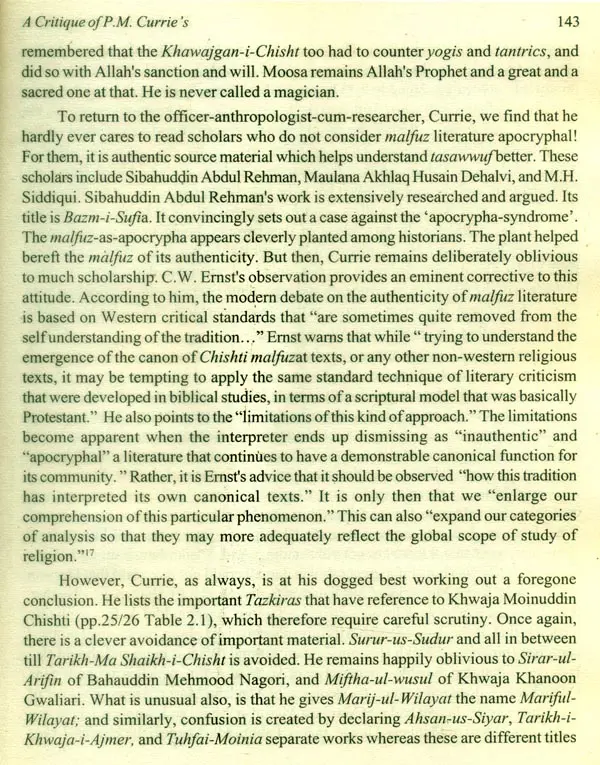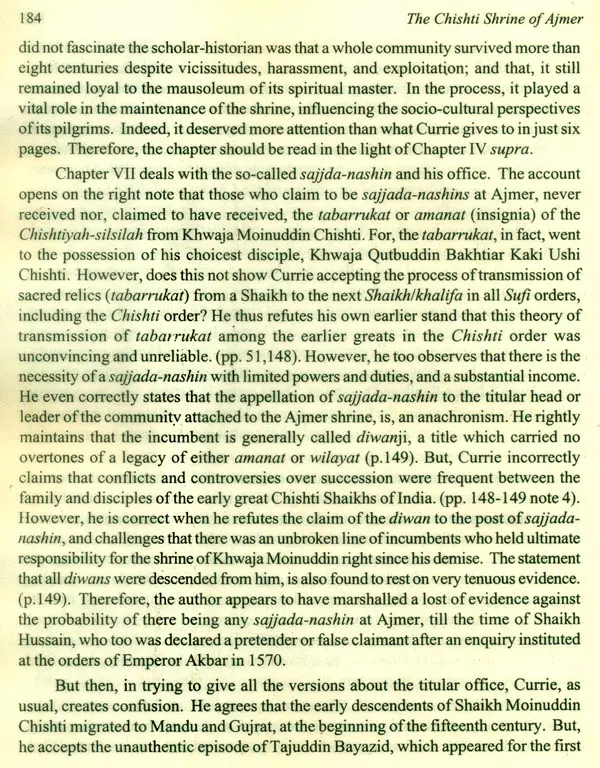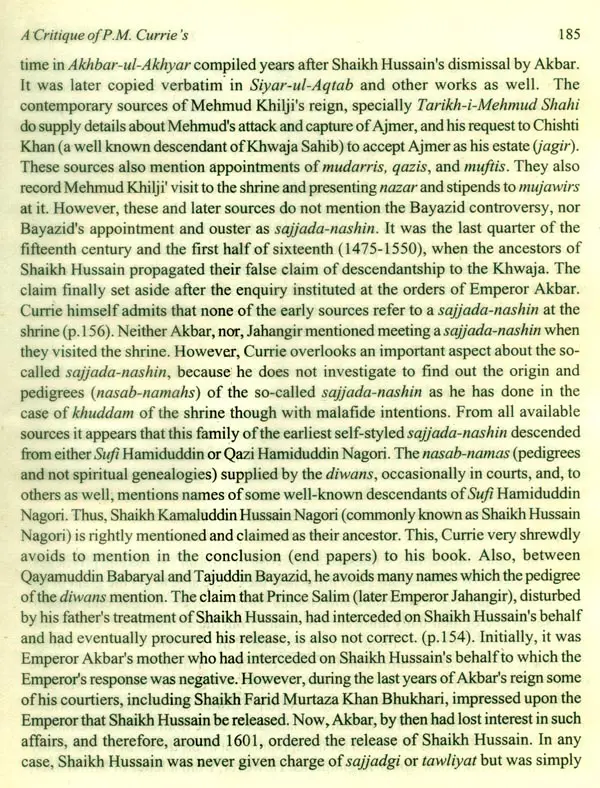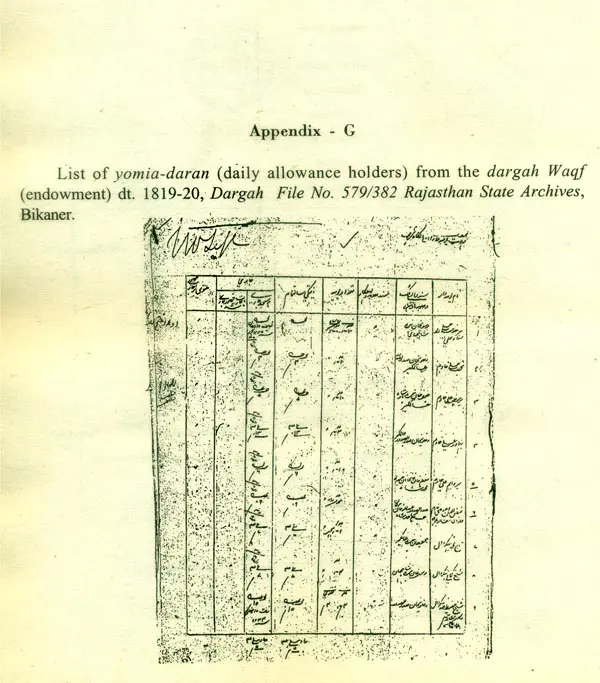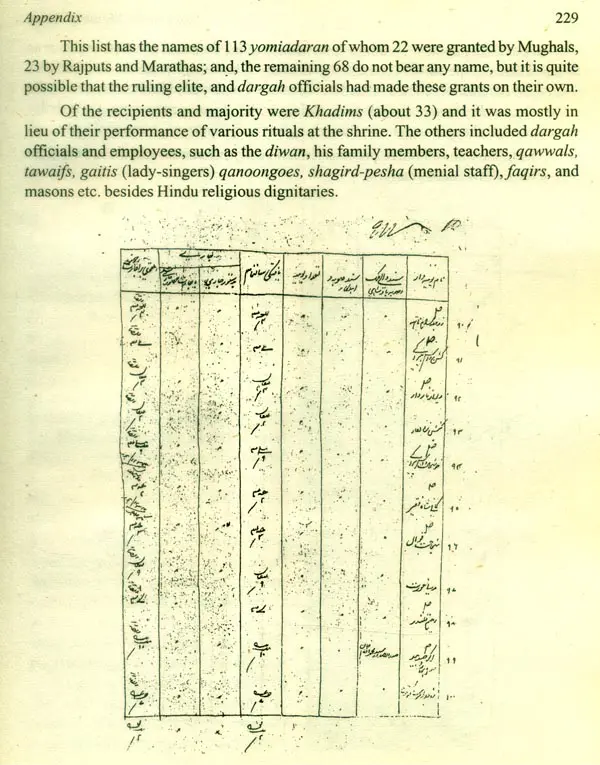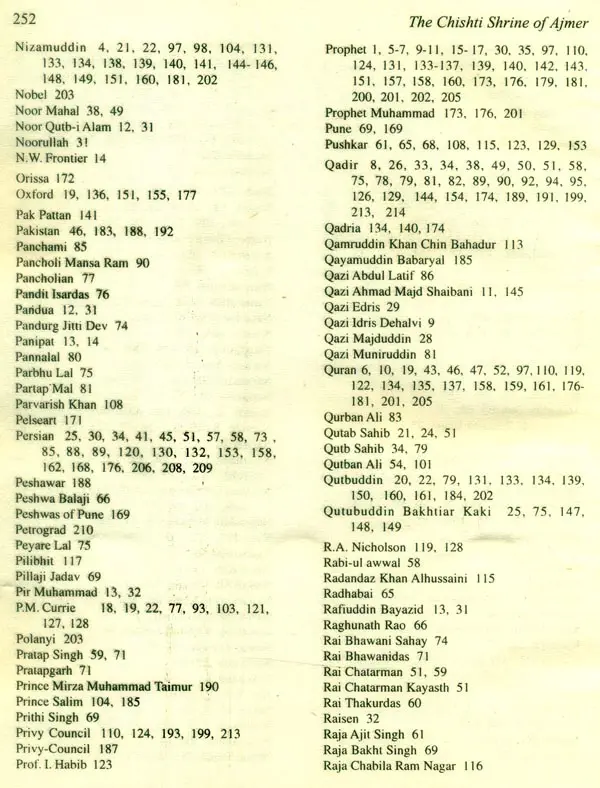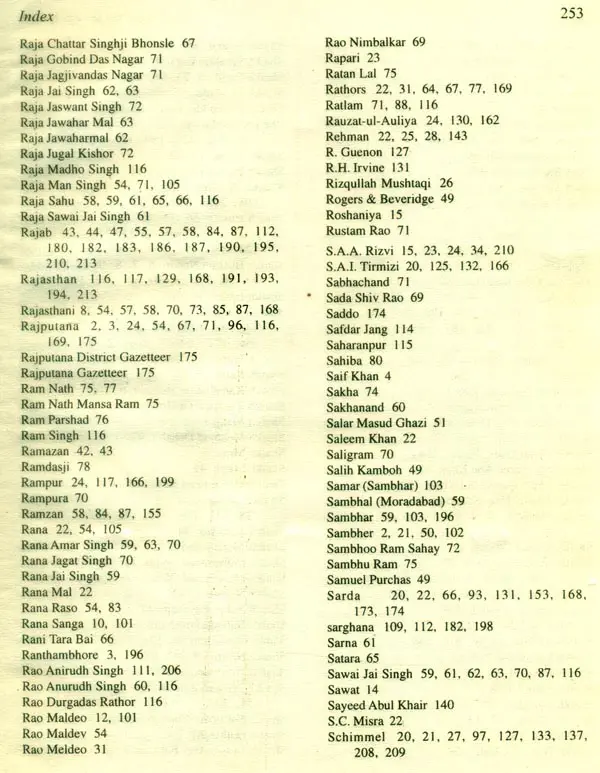
The Chishti Shrine of Ajmer- Pirs, Pilgrims, Practices (An Old and Rare Book)
Book Specification
| Item Code: | UAD279 |
| Author: | S. Liyaqat H. Moini |
| Publisher: | Publication Scheme, Jaipur |
| Language: | English |
| Edition: | 2004 |
| ISBN: | 8181820088 |
| Pages: | 276 |
| Cover: | HARDCOVER |
| Other Details | 10.00 X 8.00 inch |
| Weight | 690 gm |
Book Description
The present work deals with the teachings, thought and practices of the great Chishti saint, Khwaja Mo'inddin and the history, working organization of the shrine, the duties and functions and role of its custodian/keepers and supervisors (khuddam), sources of income, ceremonies and crowds of pilgrims on the occasion of annual urs the dargah. The work is based on contemporary literature, vast and varied, including the documents of land grants and endowments given by Mughal nobles especially of Hindu chieftains-the Rajput and Marathas for the maintenance of khuddam and upkeeps of the shrine, throwing light on their devotional attachment to it and on their devotional attachment to it and on the religious climate of the period. These -articles were highly appreciated by specialists in this important area of study which prompted the author to publish them in the form of a book.
A critical review of the thesis of P.M. Currie on the great saint and the functioning of his shrine, presented at Oxford for the degree of D. Phil. in particular, merits attention to the recent studies attempted till now on the significance of the life and role of Sheikh Mo' Indian Chishti of Ajmer, his shrine and also of khuddan in transforming. socio-religious beliefs and ways of thinking of people in the Indian subcontinent.
But in addition to their pre-commitments, which often lead them to look at some bits of evidence while ignoring others, to advance one viewpoint while slighting or distorting others, historians also have to depend on the availability of accurate and adequate - source material.
Nowhere, in the history of South Asian Islam is the problem available source material more poignant than the annals of institutional Sufism. Most sources reflect only an elite understanding of a structure of relationships that must have permeated all levels of society from the court to the bazaar, from the battlefield to the hearth and home. Those extant sources that we have are written in Indo-Persian; they are mostly preserved as biographical dictionaries of those invested in the preservation and advancement of institutional Sufism.
Layered on to the elite, advocacy nature of sources is the difficulty of modem scholarship. In an earlier essay, criticizing myself along with other scholars of Sufism.
I wrote:
To chart a path of ‘interpretative value through the minefields of extant scholarship of Persian Sufism one must acknowledge two disparate perspectives - ours and our subjects. We who are modem researchers have chosen to investigate pre-modem writings from a non-Western part of the globe. A chasm of time and space separates us from our subjects, they from us. Our subjects' worldview, in common with all pre- modern worldviews, eschewed both the Galilean mode of reasoning and the Cartesian conception of knowledge. In their stead, our subjects privileged "textual exegesis, cosmic analogies and above all appeals to authority, genealogical and literary, scriptural and juridical."
Yet we presume to study pre-modem Persian Sufis, knowing that their worldview is not ours, no matter how great our affection for their writings or our immersion in the quest that motivated them. Our perspective is at once individual and collective.
However much we might demur aspects of the place and time in which we live, we cannot fully escape its dominant mood. We are shaped by what Boride calls the habitués, the taken for granted outlook of late 20th century global capitalism. From that perspective we are all marked as post-Galilean, post-Cartesian and, horror of horrors, even post-modem. We investigate the past as a social datum filtered through our own present. We approach it with handles that are provisional labels in the service of our own enquiry. We enjoy no secure frames of reference; we possess no uncontestable or incontrovertible facts. In approaching tasawwuf, we are limited by our modernity, even as we are privileged by it. 'We are also limited by our focus on the Persian language, Persian actors, and Persian texts, despite the evident organizational benefit and the hoped for explanatory yield of that stricture.
However, both the academic and religious fraternities agree that Islamic tasawwuf is deeply rooted in the tenets of the Holy Quran and the sunny (traditions) of the first 'Ideal Sufi' of humanity, 'The Prophet of Islam’. Later on, his companions (sahib), family members, descendants (all-in bait), their immediate followers (tabbies) and their successors (tab-i tabbies), pious leaders (imams), carried forward the message of Islamic mysticism. They all strictly followed, practiced and adhered to the early Islamic tendencies of adab-akhlaq (moral ethics) zikr (litany and recollection), zuhd (piety) tawwakul (reliance on or trust in God), raza (submission to God), sabr (patience), and love for Him and for His Prophet and creatures (mankind). Thus the torch lighted by the Prophet of Islam still continues to shine brightly in the khanqahs and dargahs all over the world with the same glow and enthusiasm.
The basic and fundamental objective and motive of Islamic tasawwufis to produce a life system based on moral and ethical values and to discipline the people and society in this spiritual and moral mode and conduct of life. Thus, tasawwuf the esoteric aspect of Islam evolved very gradually and in the most natural fashion from the Islamic practices.
"Purest and virtuous ethics and manners is tasawwuf, and the one who holds the best, supreme, pious and holy tendencies, is the greatest Sufi." "There are two aspects of it, the one is connected to God and the other is related with His creatures. The first category is to be totally contended and surrender to His will, and the second is, for God's sake, to bear the burden of the company and activities of His creatures without complaint and yet be well disposed towards them." The true saint or real Sufi is the one who faces the ill treatment of others with equanimity.
However, in the early days, tasawwufwas an unchristened reality without name and nowadays, it is only a name without reality. Shorn of its essential practices it now remains a mere pretence. Tasawwuf is esoteric in so far as its deeper meanings and • religiosity remains confined to a close coterie of initiated few. Despite this the entire amah is an evidence of its cultural, social and behavioral implications and manifestations. In fact, Sufism is the mysticism of love. It is a quest for reality, a yearning for the infinite. Sufism is neither dogma nor free-thinking. An institutive personal experience, it stresses spiritual development and moral progress. A self- discipline, a code of conduct, Sufism denotes the relation of man with man and his Creator. Goethe had defined Sufism as the scholasticism of heart and the dialectics of feelings. According to Maruf Karkhi it was an apprehension of divine realities.
Tasawwuf entails a twofold development vertically it enables an ordained disciple of a sheikh to reach a stage of complete absorption in the oneness of Allah. The silsilah or the system gradually enhances his awareness. By degrees this enlightenment which originated with the pir ascends to the spiritual luminaries above him in the hierarchy.
The advancement culminates in his final perception of the Prophet and Allah. Guidance from the pir revolves around an understanding of the shajrah and practices of zikr.
Sama/qawwali - a Sufi recital gathering with music considered an essential aspect of Chishtiyah order of mystics elates the soul and facilitates its journey to ultimate truth. Sama which revolves around the principle of love is a highly potent vehicle for spiritual assimilation. It makes the devotee aware of his love for the marched. To the Sufis, it is a renewal and recollection of the promise and contract made with the pir and through him up to Prophet and ultimately to Allah. The attachment detachment dialectic further encourages the adherent to observe 'zikr' in order to feel the oneness and greatness of Allah. Almost involuntarily the votary becomes indifferent to the world and seeks oneness with divinity. However, the attainment of the goal of vertical spiritual upliftment also entails selfless service to human kind. This leads us to the second precept of spiritual education. In this mode the consciousness of the devotee travels horizontally.
Book's Contents and Sample Pages
